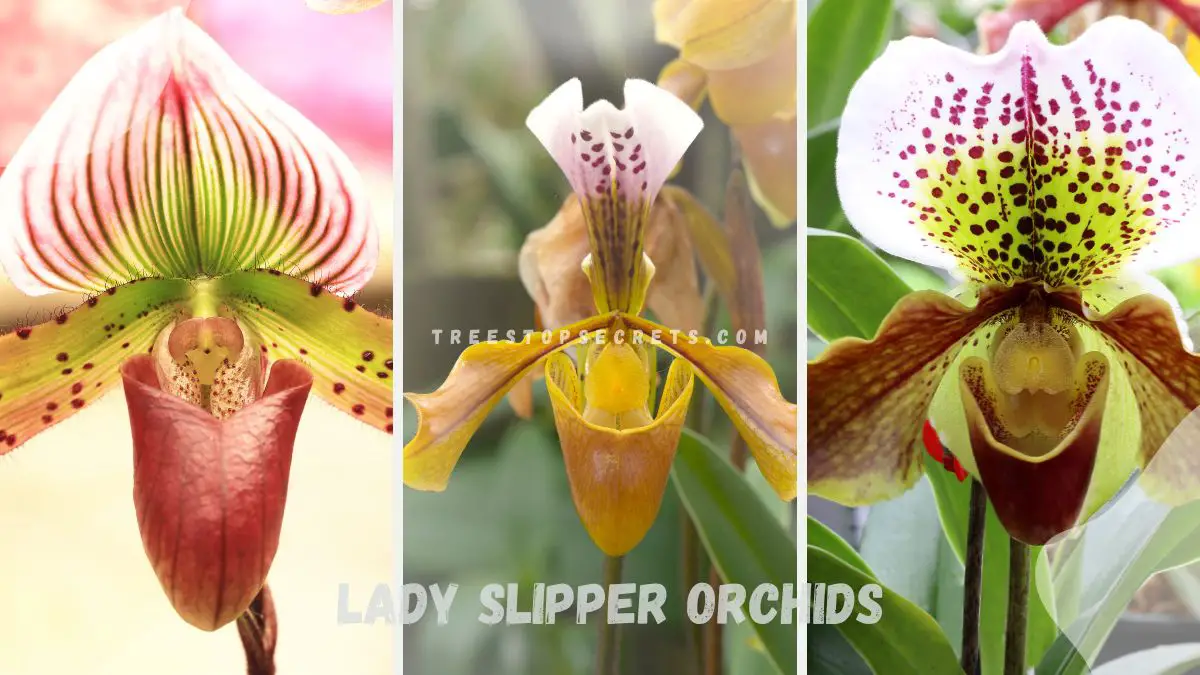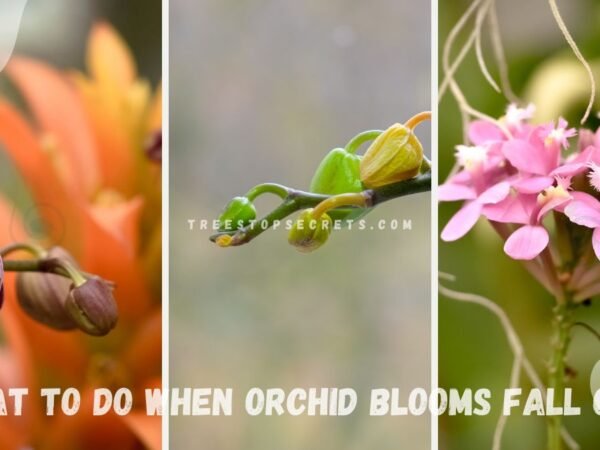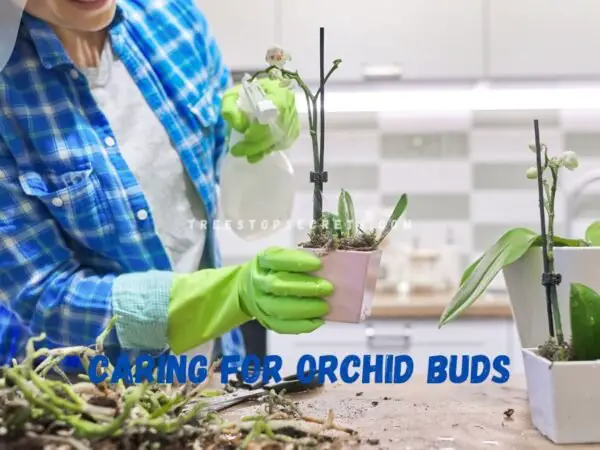Lady slipper orchids, known for their unique pouch-like petals, have captivated plant enthusiasts for centuries. These mesmerizing pink lady slipper orchids belong to the Cypripedioideae subfamily and are revered for their striking beauty and elusive nature. With a rich history dating back to the 1800s, these orchids have been prized for their ornamental value and medicinal properties.
Orchid collectors and botanists have long been fascinated by the intricate blooms of lady slipper orchids, leading to various discoveries and cultivation techniques over the years. From their origins in Asia to their widespread popularity in modern horticulture, these exquisite flowers continue to enchant admirers worldwide with their charm and elegance.
Key Takeaways
- Discover the beauty of lady slipper orchids and consider adding them to your garden for a unique touch.
- To successfully grow lady slipper orchids, ensure they have the right soil, light, and watering conditions.
- Proper care and maintenance, including repotting when necessary and protecting from pests, are crucial for the health of lady slipper orchids.
- Understanding the lifecycle of lady slipper orchids can help you anticipate their needs at different stages of growth.
- Be prepared to tackle common challenges like overwatering, improper lighting, and diseases to keep your lady slipper orchids thriving.
- Enhance your garden by strategically placing lady slipper orchids to create a visually appealing and harmonious landscape.
Discovering Lady Slipper Orchids
Types and Varieties
Lady slipper orchids belong to the Cypripedioideae subfamily, known for their unique pouch-like petals. Some popular species include the Cypripedium acaule, or Pink Lady Slipper Orchid, and various hybrid lady slipper orchids. Each variety showcases distinct characteristics, such as color variations and petal patterns. The lady slipper orchid genus encompasses a wide range of species, each with its own charm.
- Cypripedium reginae: Known as the Showy Lady's Slipper, this species boasts large white flowers with a pink pouch.
- Cypripedium parviflorum: The Yellow Lady's Slipper features delicate yellow blooms with intricate veining.
- Cypripedium calceolus: Also called the European Lady's Slipper, it showcases vibrant yellow flowers with maroon streaks.
Lady slipper orchids exhibit diverse traits that appeal to enthusiasts worldwide. From the elegant Pink Lady Slipper Orchid to the striking Showy Lady's Slipper, each variety offers a unique allure for plant lovers.
Natural Habitats
Lady slipper orchids thrive in various natural habitats, including deciduous forests, bogs, and woodlands. These orchids prefer environments with rich organic matter and proper drainage to support healthy growth. In the wild, they can be found across North America, Europe, and Asia, adding a touch of elegance to their surroundings.
- Deciduous Forests: Lady slipper orchids often flourish amidst leaf litter and shaded areas within deciduous forests.
- Bogs and Wetlands: Some species, like the White Lady Slipper, prefer moist conditions found in bogs and wetlands.
- Woodlands: Lady slippers grace woodlands with their vibrant colors and distinctive shapes, blending seamlessly into the natural landscape.
Lady slipper orchids enchant nature enthusiasts with their graceful presence in diverse ecosystems, highlighting the beauty of these delicate flowers in their natural habitats.
Conservation Efforts
Conservation efforts play a vital role in protecting lady slipper orchids from habitat loss and over-harvesting. Preserving these exquisite orchids is crucial to maintaining biodiversity and ecosystem balance. Habitat management practices, such as controlled burns and invasive species removal, contribute significantly to their conservation.
- Protected Areas: Establishing protected areas helps safeguard lady slipper orchids from human interference and habitat destruction.
- Education and Awareness: Raising awareness about the importance of conservation encourages individuals to take action in preserving these precious orchids.
Conservation initiatives are essential for safeguarding lady slipper orchids for future generations to admire and appreciate their beauty in the wild.
Growing Your Own
Selecting the Right Type
Lady slipper orchids come in various varieties, each with its unique characteristics. Consider factors like light requirements, temperature tolerance, and humidity preferences. Some types thrive in low light, while others need bright, indirect sunlight.
When choosing a lady slipper orchid variety, explore options that match your local climate conditions. Certain types are more adaptable to cooler temperatures, while others prefer warmer environments. Select a variety that aligns with your ability to provide suitable care.
Planting Tips
To ensure successful growth, follow these essential planting tips for lady slipper orchids. Understand the importance of using a well-draining potting mix to prevent waterlogging. Ensure that the pot has proper drainage holes to avoid root rot issues.
Proper planting techniques are crucial for the health of your lady slipper orchids. Avoid burying the orchid too deep in the soil; instead, position it slightly above the surface. Provide sufficient airflow around the roots to prevent moisture-related diseases.
Ideal Conditions
Lady slipper orchids thrive in specific conditions that mimic their natural habitat. Identify the ideal conditions required for optimal growth, including moderate temperatures and high humidity levels. Create a microclimate by placing a tray filled with water near the plant to increase humidity.
Maintaining ideal conditions is key to supporting healthy development in lady slipper orchids. Monitor temperature fluctuations and adjust as needed to keep it within the preferred range. Ensure adequate air circulation to prevent fungal infections and promote overall plant health.
Care and Maintenance
Watering Needs
Lady slipper orchids require specific watering to thrive. To prevent issues, water them sparingly to avoid root rot. Ensure the pot has proper drainage.
Understanding the delicate nature of lady slipper orchids is crucial for their care. Overwatering can lead to fungal diseases, so let the soil dry slightly between waterings.
- Pros: Prevents root rot, maintains healthy growth
- Cons: Risk of underwatering if not monitored closely
Fertilizing Practices
For lady slipper orchids, follow a careful fertilizing routine. Use a balanced fertilizer during the growing season to promote blooming. Avoid over-fertilizing to prevent damage.
Fertilizers play a vital role in the growth and blooming of lady slipper orchids. Apply fertilizer at half strength every 2-4 weeks during the active growing period.
- Choose a balanced fertilizer with equal parts nitrogen, phosphorus, and potassium.
- Dilute the fertilizer to half strength to avoid burning the roots.
Pruning Techniques
Mastering pruning techniques is essential for maintaining lady slipper orchids. Trim dead or yellowing leaves to promote new growth and blooming. Prune carefully to avoid damaging healthy parts.
Proper pruning ensures lady slipper orchids remain healthy and vibrant. Regularly remove dead flowers and leaves to encourage new blooms and prevent disease spread.
- Lady slipper orchids need occasional pruning to maintain their health and appearance.
- Avoid cutting into healthy tissue while pruning to prevent stress on the plant.
Understanding Their Lifecycle
Growth Stages
Lady slipper orchids go through distinct growth stages: germination, seedling, mature plant. Each stage brings visible changes. Monitor these stages closely to provide proper care.
Lady slipper orchids start as tiny seeds, germinating into delicate seedlings that gradually develop into mature plants. The leaves grow larger, and the roots extend deeper with each passing stage. Recognizing these changes is crucial for nurturing healthy orchids.
- Germination
- Seedling
- Mature plant
Blooming Cycle
During the blooming cycle, lady slipper orchids showcase their stunning flowers. Factors like light, temperature, and watering influence blooming. Observing this process can be rewarding and educational.
The blooming cycle of lady slipper orchids is a captivating sight. As the buds develop and bloom, the colors and patterns of the flowers unfold beautifully. By providing optimal conditions, you can enhance the blooming experience for your orchids.
- Light
- Temperature
- Watering
Dormancy Period
Understanding the dormancy period of lady slipper orchids is essential for their overall health. Care during dormancy involves reducing watering and providing cooler temperatures. This period allows the plants to rest and rejuvenate.
Lady slipper orchids enter a dormancy period where growth slows down, and some leaves may wither. During this time, it's crucial to adjust your care routine by decreasing watering frequency. This phase prepares the plants for a period of rest before they resume active growth.
- Reduce watering
- Provide cooler temperatures
Common Challenges
Pests and Diseases
Lady slipper orchids are susceptible to common pests like aphids and spider mites. These pests can damage the leaves and flowers. Diseases such as root rot and fungal infections can also affect their health. To treat these issues, use organic insecticides and fungicides. Preventive measures include proper ventilation and maintaining optimal humidity levels.
Environmental Stress
Signs of environmental stress in lady slipper orchids include yellowing leaves and stunted growth. Factors like temperature fluctuations and poor air circulation can cause stress. To minimize stress, provide consistent temperatures and adequate air flow. Creating a supportive environment with proper lighting and humidity levels is crucial for their well-being.
Over or Under Watering
Improper watering practices can harm lady slipper orchids. Overwatering leads to root rot, while underwatering causes dehydration. Consequences of these practices include wilting leaves and poor flowering. Strike a balance by allowing the soil to dry slightly between waterings. Use a well-draining potting mix to prevent waterlogging.
Enhancing Your Garden with Slipper Orchids
Design Ideas
Lady slipper orchids can be a stunning addition to your garden, enhancing its beauty and charm. Explore creative ways to incorporate these enchanting flowers into your space. Create unique displays that showcase the elegance of slipper orchids, adding a touch of sophistication to your garden. Consider placing them in hanging baskets, terrariums, or as standalone potted plants to highlight their beauty.
- Pros:
- Adds elegance and sophistication to your garden.
- Creates unique and eye-catching displays.
- Cons:
- Requires specific care and attention.
- Limited availability of certain slipper orchid species.
Companion Plants
Understanding suitable companion plants for lady slipper orchids is crucial for creating a harmonious ecosystem in your garden. Choose plants that thrive in similar conditions and complement the beauty of slipper orchids. Consider growing ferns, mosses, or other shade-loving plants alongside slipper orchids to create a lush and diverse garden environment. Companion plants can also help improve soil quality and provide natural pest control, benefiting the overall health of your garden.
- Suitable companion plants:
- Ferns
- Mosses
- Shade-loving plants
- Benefits of companion plants:
- Improve soil quality
- Provide natural pest control
Seasonal Care Tips
To ensure the health and longevity of your lady slipper orchids, it is essential to provide proper care throughout the year. Adjust your care routines based on seasonal changes to meet the specific needs of these delicate plants. During the growing season, maintain consistent watering and fertilization schedules to promote healthy growth. In colder months, protect orchids from frost and provide adequate warmth to prevent damage.
- Spring/Fall:
- Increase watering frequency as orchids enter active growth phases.
- Apply balanced fertilizer to support blooming.
- Summer:
- Provide ample shade to prevent sunburn on leaves.
- Water regularly to maintain soil moisture levels.
- Winter:
- Protect orchids from cold drafts and temperature fluctuations.
- Reduce watering frequency to prevent root rot.
Beyond the Garden
Orchids in the Wild
Lady slipper orchids exhibit exquisite beauty in their natural wild habitats, thriving in diverse ecosystems. These orchids play a crucial role in supporting local biodiversity by providing nourishment and habitat for various insects and animals. Preserving lady slipper orchids in the wild is essential to maintain the delicate balance of these ecosystems.
Lady slipper orchids, found in the wild, contribute significantly to the ecosystem by sustaining pollinators and other wildlife. Their unique structures attract specific pollinators, ensuring effective cross-pollination and genetic diversity among plant species. The presence of these orchids enhances the overall health and resilience of the surrounding environment.
- Lady slipper orchids offer shelter and food sources for insects
- They aid in maintaining a healthy and diverse ecosystem
Role in Ecosystems
Understanding the importance of lady slipper orchids reveals their vital role in supporting ecosystems worldwide. These orchids enhance biodiversity by providing unique habitats for various species, contributing to the overall ecological balance. Their presence fosters a harmonious relationship between flora and fauna, promoting a sustainable environment.
Lady slipper orchids are crucial for maintaining ecological balance due to their interactions with pollinators and other organisms. These orchids support the survival of numerous species by offering essential resources, such as nectar and shelter. By safeguarding lady slipper orchids, we ensure the preservation of entire ecosystems.
- Lady slipper orchids contribute to biodiversity
- They play a key role in sustaining ecological harmony
Future of Conservation
Exploring the future of lady slipper orchid conservation highlights ongoing efforts to protect these vulnerable species. Conservation initiatives aim to safeguard natural habitats, combat illegal trade, and raise awareness about the significance of preserving these orchids. Securing the future of lady slipper orchids is paramount for maintaining global biodiversity.
Efforts to conserve lady slipper orchids are critical for ensuring their long-term survival in the face of habitat loss and climate change. Conservationists work tirelessly to establish protected areas, implement sustainable practices, and engage local communities in conservation efforts. The future of lady slipper orchids depends on our collective commitment to their preservation.
- Ongoing conservation efforts focus on protecting natural habitats
- Community involvement is crucial for the successful conservation of lady slipper orchids
Closing Thoughts
As you delve into the world of lady slipper orchids, you've unlocked the secrets to successfully growing and caring for these captivating plants. Understanding their unique lifecycle and common challenges equips you to enhance your garden with their beauty. Beyond the garden, lady slipper orchids offer a realm of exploration and possibilities, elevating your gardening experience. Embrace the joy of nurturing these exquisite flowers and continue to expand your knowledge to ensure they thrive in your care.
Take action now by applying the insights gained here to cultivate a flourishing garden filled with the enchanting allure of lady slipper orchids. Share your newfound expertise with fellow gardening enthusiasts and continue to unlock the wonders of these remarkable plants. Your journey into the world of lady slipper orchids has just begun!
Frequently Asked Questions
Are Lady Slipper Orchids easy to grow indoors?
Yes, Lady Slipper Orchids can be grown indoors with proper care. Ensure they have indirect light, high humidity, and well-draining soil. Monitor watering carefully to prevent root rot.
How often should I water my Lady Slipper Orchids?
Water your Lady Slipper Orchids once a week, allowing the soil to dry slightly between watering. Adjust frequency based on environmental conditions such as temperature and humidity.
Do Lady Slipper Orchids require special care compared to other orchid varieties?
Lady Slipper Orchids have specific care requirements due to their unique structure. They prefer filtered light, high humidity, and well-draining soil. Understanding their needs will help them thrive.
Can Lady Slipper Orchids survive in cold climates?
Lady Slipper Orchids are typically suited for warm and humid environments. If you live in a cold climate, consider growing them indoors or providing a greenhouse with controlled temperature and humidity levels.
How can I enhance the beauty of my garden with Lady Slipper Orchids?
Plant Lady Slipper Orchids in shaded areas with well-draining soil to create a stunning visual display. Their vibrant colors and unique shapes add elegance and charm to any garden landscape.
Image Source: Paid image from CANVA





